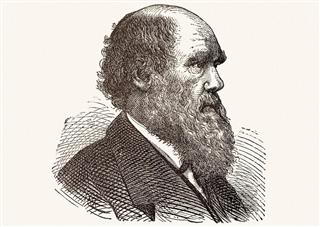
Naturalistic intelligence is related to how we connect and adjust to our natural surroundings. This PsycholoGenie post highlights the characteristics and examples of natural intelligence.
Quick Info
American developmental psychologist Howard Gardner is the founding father of the Multiple Intelligences Theory. His initial framework included 7 types of intelligence, and the eighth type, i.e., naturalistic intelligence, was added later, in 1996, for those who were experts in natural sciences.
An individual with naturalistic intelligence exhibits an interest in natural elements, like gardens, forests, mountains, etc. This domain of intelligence deals with finding patterns or making connections in natural objects.
According to Gardner, such people are ‘nature-smart’. Their ability to relate to things around them make them great observers and helps them distinguish among the minutest changes in the environment. The paragraphs below focus on the characteristics of naturalistic intelligence and enlist some career options for naturalists.
Characteristics
◼Dislike pollution
Naturalists hate anything that destroys the environment. They despise pollution, cutting of trees, plucking flowers before they bloom; in short, anything that destroys natural beauty.
◼Love nature
They are very passionate about nature. They love to read endlessly about books related to nature and about the works of great naturalists. They are also very fond of movies and shows that focus on nature.
◼Fond of outdoor activities
Naturalists are often nicknamed ‘outdoorsy’. This is because they love everything outdoors. They love to hike, trek, camp, etc. They love to explore forests and the hidden treasures of nature, they love to discover something new related to plants and animals.
◼Love gardening and farming
This goes without saying that they love to get their hands ‘dirty’. They enjoy getting themselves muddy, love to water plants, plant seeds, and the joy they obtain in watching their garden grow is indescribable. Their smile could light up a town (okay, that is a hyperbole, but they do derive immense happiness).
◼Deep understanding of natural elements
They notice subtle changes in weather that normal people may not notice. They can identify when it will rain, when a storm could be on the way, when a plant will start flowering, or when a pet needs something, etc.
◼Show interest in biology
This is something that is apparent in children. They will start displaying a keen interest in biology from a very young age. Other subjects they may like are geography, geology, etc.
◼Expert at categorizing information
Naturalists are experts at classifying information, observing patterns, and creating new patterns. They love to categorize rocks, stones, shells, leaves, and anything related to nature.
Examples
Naturalistic intelligence is exhibited by people in different situations. Some of the examples are enlisted below.
◼A student loves to travel outdoors and distinguish among a variety of flora and fauna.
◼ A person is very fond of gardening and farming and may spend hours in the garden, experimenting with different plants, cleaning and mowing the lawn, watering the plants, etc.
◼A person exhibits keen observational skills, and is able to differentiate among various patterns.
◼A student loves subjects, such as botany, zoology, archeology, geology, etc.
◼A child loves to make crafts out of natural materials like wood, leaves, flower petals, shells, etc.
◼A toddler or kid loves to memorize names of animals, plants, and all the natural elements. His face lights up when he sees the sunrise and sunset, when he observes the changing patterns in the weather, and when he feeds pet animals.
◼A person loves to go for hiking, camping, trekking, etc. He also loves to capture natural beauty in his camera.
◼A person would prefer spending his time recycling products, making use of environmental waste, rather than socializing or clubbing.
◼A student loves to learn about the geographical changes―the tides, the climate, volcanoes, earthquakes, deserts, oceans, etc.
◼A person loves to visit the zoo, aquarium, sanctuaries, etc.
◼A child loves to collect flowers, shells, rocks, stones, tree barks, etc.
Suitable Careers
- Horticulturist
- Archaeologist
- Volcanologist
- Ornithologist
- Geologist
- Botanist
- Ecologist
- Zoologist
- Paleontologist
- Meteorologist
- Scientist/Forensic expert
- Conservationist
- Gardener
- Farmer
- Animal Trainer
- Park Ranger
- Zookeeper
- Marine Biologist
- Veterinarian
- Landscaper
- Environmental inspector
- Wildlife/Nature Photographer
Famous People with Naturalistic Intelligence
The list below contains some famous people/celebrities who possess naturalistic intelligence.
- Charles Robert Darwin: A British geologist, he is famous for contributing to the theory of evolution.
- Viktor Schauberger: Originally from Austria, he was a famous naturalist and forest caretaker.
- Gerald “Gerry” Malcolm Durrell: Famous for founding the Durrell Wildlife Conservation Trust, he was an English zookeeper and conservationist.
- George Washington Carver: The world-famous American botanist, known for inventing innumerable things from peanuts.
- Rachel Carson: The author of “Silent Spring”, she was an American conservationist and marine biologist.
- John Muir: The founder of the Sierra Club, he was a Scottish-American environmentalist who advocated the preservation of wilderness.
- Luther Burbank: Renowned for developing more than 800 plant varieties, he was an American agricultural scientist and horticulturist.
- E.O. Wilson: An American biologist and expert in the study of ants, i.e., myrmecology.
- Aldo Leopold: Best known as the author of “A Sand County Almanac”, he is an American conservationist, ecologist, and forester.
- John James Audubon: Noted American ornithologist and naturalist, known for his bird paintings.
Unfortunately, some experts have considered naturalistic intelligence to be more of an ability than an intelligence. However, it is to be remembered that it is due to this kind of intelligence that man learned to identify edible flora and fauna, changing environmental patterns, and acute classification of objects.














